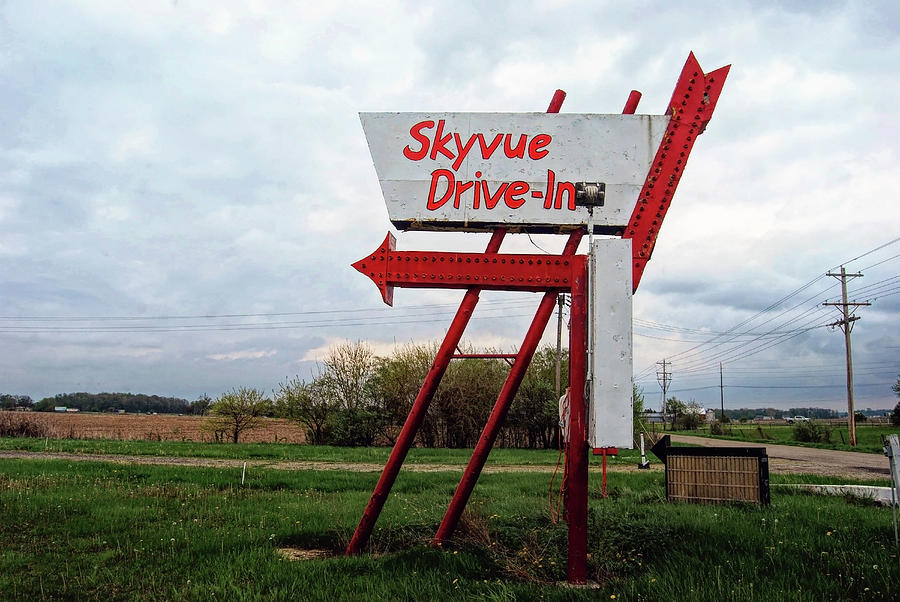

In most drive-ins, children were admitted free or the admission charge was simply per car. But in the early days it was clear that the original intention of the drive-in owners was for family style entertainment: mom, dad, and the baby-boom children. Popular culture tends to look back upon the golden age of the drive-ins in the 1950s and 1960s as somewhat seedy places catering to the amorous pursuits of teenagers. In drive-ins in colder climes, they even had individual hanging heaters similar in style to the speakers. You could also control the volume of your individual speaker and, presumably, the talking and noise of those in the car with you. In addition, with individual speakers hanging inside your car window, sound was better than at many older theaters. At the drive-in, you could eat all you wanted in the comfort of your own car.

The Appalachian Theatre in Boone, for example, had a soda shop outside of the theater entrance and patrons were encouraged to consume food and drink in the shop itself before or after the film.
#Skyvu drive in movie
At many movie theaters in traditional buildings-called "hard tops" in the business to distinguish them from drive-ins-drinking and eating would have been done outside of the seating space for the film. Drive-ins were also located on the outskirts of towns where the city lights would not interfere with the projected image on the screen and where, coincidentally, the traffic was lighter than downtown.Ī less obvious advantage of the drive-ins was concessions. But at the drive-in, your seats were in your car-your parking space became the theater. As more and more people moved out of cities and small towns into the suburbs, using their cars to commute to and from work and shopping, theater goers were faced with longer drives to see a show and fewer parking spaces once they arrived in town. There were obvious and not so obvious reasons for the popularity of the drive-ins. Suburban and rural drive-in theaters were a natural extension of the car-crazy culture that fueled the 1950s. 5, 1955, it said that Tri-States Buying and Booking Service was handling the drive-in.Although drive-in movie theaters had their beginnings in the 1930s, it was in the post-World War II era when they truly flourished. The Billboard magazine said the Roy Sullender’s National Screen Service Corporation was handling the buying and booking for the Sky-Vu.

When Tim and Renate Neal leased and reopened it in 2016, Marvin Troutman still owned the place. Reports say the Sky Vu closed (again) in 2014. Which means it must have been closed for a while before that. The United Drive-In Theatre Owners Association wrote that the Sky-Vu reopened in 1994. “Shortly afterward, he and his wife formed Martro Theatres, Inc.” And they began running X-rated movies at both drive-ins. Around 1969, Marvin Troutman, son of Marvin and Ada Troutman, bought the Sky-Vu and the nearby Halifax Drive-In. The Lykens Valley blog fills in part of this period. Trautman, that’s how it stayed through the final IMPA list in 1988. When ownership information resumed after a decade off, the 1978 edition listed Trautman, capacity 200. For the 1961-66 editions, only the owner changed, to E. Wolfe, which is how it stayed through at least 1959. The 1951-52 International Motion Picture Almanac listed the Did that mean under construction? By the 1952 edition, the listing had evolved to the Sky Vu, capacity 232, Exec: Eston, Artz and Carl, Spring Glen. The 1949-50 Theatre Catalog lists “Drive In” in Gratz, capacity 550, Exec: Artz and Carl (UNC). (I’ve uploaded the ad to the Photos section here.) It doesn’t quite say so, but it appears to be a grand opening ad: “SKY VU Drive-In Theatre welcomes you to one of America’s most unique outside theatres.” The ad described the Sky Vu’s benefits in copy that wasn’t repeated in the weekly ads that followed. The first newspaper reference I could find was an ad in the Elizabethville Echo of July 13, 1950. Eston and Stanford established a partnership to create the Sky-Vu Drive-In Theatre in 1950.” “In 1949, the land on which the theatre now stands, was sold by Allen Lincoln Shade and Etta May Shade to Eston C.

Norman Gasbarro’s Lykens Valley blog has a great history of the Sky-Vu.


 0 kommentar(er)
0 kommentar(er)
